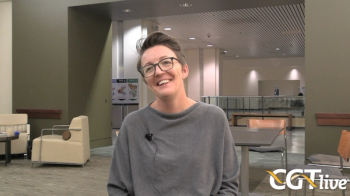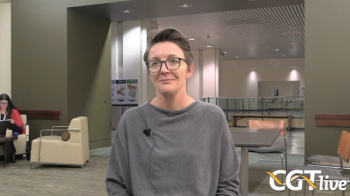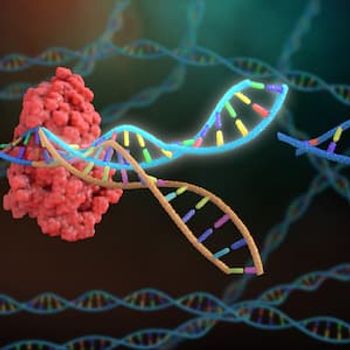
News and Expert Insights in Pompe Disease Gene Therapy for International Pompe Day
In observance of International Pompe Day, held annually on April 15, catch up on the past year’s news and expert insights related to gene therapies in development for this rare disease.
Over the past year, CGTLive™ has covered news and clinical trial data updates related to the various gene therapies currently in development for Pompe disease and conducted interviews with experts to discern their potential to affect the care paradigm. According to the National Organization for Rare Disorders, Pompe disease occurs in approximately 1 in 40,000 births in the United States and the Netherlands; however, in some populations, the incidence is substantially higher.1
For International Pompe Day, observed annually on April 15 by the patient and clinician communities, the CGTLive team has gathered some of our past news coverage and interviews on Pompe disease gene therapy below to offer an overview of the therapeutic progress being made for this rare disease.
Late-Onset Pompe Disease Gene Therapy Shows Promise in Phase 1/2 Study
Earlier this year, Astellas Pharma’s AT845, an investigational adeno-associated virus (AAV) vector-based gene replacement therapy intended to treat late-onset Pompe disease (LOPD) demonstrated encouraging efficacy in interim data from the phase 1/2 FORTIS clinical trial (NCT04174105).2,3 The data were presented at the
AT845 is intended to deliver a functional copy of the GAA gene with a muscle-specific promotor via an AAV8 vector with tropism to muscle tissue. Among the 4 patients treated with AT845 in the FORTIS trial so far, 3 have ceased treatment with their prior standard of care treatment, enzyme replacement therapy (ERT). Patient 01, a 52-year-old man with 68 weeks of follow-up, withdrew from ERT at 17 weeks posttreatment with AT845; Patient 03, a 66-year-old man with 54 weeks of follow-up, withdrew from ERT at 10 weeks posttreatment; and Patient 09, a 49-year-old woman with 43 weeks of follow-up, withdrew from ERT at 24 weeks. Patient 02, a 48-year-old woman with 78 weeks of follow-up, has not withdrawn from ERT. Both Patient 02 and Patient 01 received a dose of 3.0x1013 vg/kg of AT845, whereas Patient 03 and Patient 09 received a dose of 6.0x1013 vg/kg of AT845.
Pompe Disease mRNA Therapy Receives FDA Orphan Drug Designation
In August 2022, Aro Biotherapeutics’ ABX1100, an investigational Centyrin-siRNA conjugate for the treatment of
Preclinical mouse model data presented at the TIDES USA 2022 meeting indicated that a single dose of 3 mg/kg (siRNA) with tool mouse specific Centyrin-siRNA conjugate led to a reduction of GYS1 mRNA and protein of more than 80% in multiple skeletal tissues 1 month after dosing.5
Furthermore, repeat dose experimentation showed significant reductions of GYS1 mRNA, GYS1 protein, and glycogen in skeletal muscles at 6 weeks after the final dose. Notably, there was no measurable gene knockdown in liver tissue observed, indicating tissue selectivity.
Gene Therapy May Eliminate Need for ERT in Late-Onset Pompe Disease
Earlier, in May of 2022, Asklepios Biopharmaceutical announced that the gene therapy AAV8-LSPhGAA demonstrated safety and the potential to eliminate the need for ERT in patients with LOPD.6
The results, from a phase 1/2 study (NCT03533673), were presented at the
“Gene therapy with an adeno-associated virus serotype 8 (AAV8) vector (AAV8-LSPhGAA) could eliminate the need for ERT by creating a liver depot for acid-alpha glucosidase (GAA) production,” Smith and colleagues wrote.
Investigators found that 2 weeks after treatment with AAV8-LSPhGAA, all participants demonstrated sustained serum GAA levels from 101% to 235% of baseline trough activity. All participants met criteria for ERT withdrawal at week 24 and continued to meet criteria to remain off ERT at weeks 52 and 104, although 1 participant chose to resume ERT at week 97.
Research Needs in Pompe Disease: Barry Byrne, MD, PhD
Also in May 2022, CGTLive spoke with Barry Byrne, MD, PhD, director of the Powell Center for Gene Therapy at the University of Florida, and an advisory committee member for the Muscular Dystrophy Association, about unmet needs in Pompe disease. He discussed further research that he would like to see conducted within the space, including natural history studies.
Improving Diagnosis in Rare Diseases: Paul Wuh-Liang Hwu, MD, PhD
Earlier in 2022, CGTLive spoke with Paul Wuh-Liang Hwu, MD, PhD, a professor of pediatrics at National Taiwan University Hospital, to learn more about unmet needs that remain in Pompe disease and aromatic L-amino acid decarboxylase deficiency. He discussed issues in diagnosing these diseases, how diagnoses could be improved, and a diagnostic assay the hospital has developed in facilitating diagnosis of AADC deficiency.
REFERENCES
1. Reuser AJJ, Dyck JHA. Pompe Disease. National Organization for Rare Disorders (NORD) website. Updated October 6, 2021. Accessed April 14, 2023. https://rarediseases.org/rare-diseases/pompe-disease/
2. Diaz-Manera J, Mozaffar T, Longo N, et al. AT845 gene replacement therapy for late onset Pompe disease: An update on safety and preliminary efficacy data from FORTIS, a phase I/II open-label clinical study. Presented at:WORLDSymposium 2023; February 22-26; Orlando, FL. Abstract #95
3. Astellas announces update on preliminary safety and efficacy data from FORTIS study of investigational AT845 in adults with late-onset Pompe disease. News release. Astellas Pharma Inc. February 22, 2023. Accessed February 24, 2023. https://www.astellas.com/en/news/27331
4. Aro Biotherapeutics receives FDA orphan drug designation for ABX1100 for the treatment of Pompe disease. News release. Aro Biotherapeutics. August 10, 2022. https://www.arobiotx.com/aro-biotherapeutics-receives-fda
5. O’Neil K. Centyrin-targeted siRNA conjugates demonstrate potential new therapeutic approach for reduction of skeletal muscle glycogen in Pompe disease. Presented at: TIDES USA 2022; May 11, 2022; Boston, MA. https://informaconnect.com/tides/speakers/karyn-oneil-phd/#delivery-of-macromolecules-room-104_centyrin-targeted-sirna-conjugates-demonstrate-potential-new-therapeutic-approach-for-reduction-of-skeletal-muscle-glycogen-in-pompe-disease
6. Smith EC, Hopkins S, Case LE, et al. Phase 1 Study of Gene Therapy in Late-onset Pompe Disease: Initial 104-Week Experience. Presented at: ASGCT 25th Annual Meeting; May 16-19, 2022; Washington DC. Abstract #1211
Newsletter
Stay at the forefront of cutting-edge science with CGT—your direct line to expert insights, breakthrough data, and real-time coverage of the latest advancements in cell and gene therapy.










































